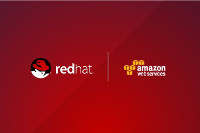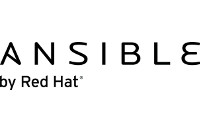Red Hat 블로그
The Friday Five is a weekly Red Hat® blog post with 5 of the week's top news items and ideas from or about
Red Hat and the technology industry. Consider it your weekly digest of things that caught our eye.


IN THE NEWS:
Fortune - How Amazon and Red Hat Plan to Bridge Data Centers
Red Hat and Amazon say they want to make it easier for corporate developers to use Red Hat's development software, which can run in-house to tap into databases and other services in Amazon's cloud as well. To be clear, AWS services run in Amazon's cloud data centers only. But Red Hat noted that OpenShift software customers will be able to configure and deploy AWS database, data warehouse and other services "with just few clicks from directly within the Red Hat OpenShift console." The OpenShift integration is an extension of an existing alliance. Customers have been able to run the Red Hat Enterprise Linux (RHEL) operating system on AWS for a decade. And they could already buy and run OpenShift itself on AWS, as they can on Azure and Google Cloud Platform. The difference here is deeper integration between OpenShift running on customer premises and AWS services running on, well, AWS. A corporate developer could mix and match software services running on the company's own servers or "out there" on Amazon Web Services to get the best of both worlds.


IN THE NEWS:
TechRepublic - Red Hat: The cloud needs an OS, and OpenShift is just the thing
I used to wonder how Red Hat would deal with a world gone gaga for public cloud. Sure, Red Hat made it straightforward to run Red Hat Enterprise Linux (RHEL) workloads on-prem, in public clouds, or in private clouds, but this didn't feel like a sufficient response to the momentum of AWS. Enter OpenShift, which dominated the main stage at Red Hat Summit. OpenShift functions as an "operating system" of sorts, abstracting away much of the complexity inherent in diverse (public cloud, private cloud, on-prem) infrastructure. Toward this goal, Red Hat announced a partnership with AWS that allows an enterprise to access AWS services directly from Red Hat OpenShift Container Platform. This means enterprises can give their developers a consistent application development environment (OpenShift) even while allowing them to use diverse cloud services. All with the promise of less lock-in risk.


RECOMMENDED READING:
IT Pro Windows - Red Hat's Vision for an Automated Enterprise
This week at Red Hat Summit, the company laid out its vision of the future, and it did so with hardly a mention of the word "Linux." Instead, we heard about "the automated enterprise, powered by Ansible." What happened? Is Red Hat no longer a Linux company? Well, it is and it isn't. Red Hat is an open source solutions provider. That's what it's been since the day it shifted its focus from home users and the desktop to the enterprise and servers. There's no need to "sell" Linux anymore. In the enterprise, everybody is already sold, with most using Linux as the backbone of their IT infrastructure. So this week, Red Hat announced its vision for the future, which can best be summarized as "bringing order out of chaos." The specifics of this came when the company announced "Red Hat's vision for the automated enterprise, powered by Ansible." Red Hat intends to remedy the complexities of modern, multi-cloud environments with Ansible, its agentless, simple automation platform. It's going to be everywhere. In other words, wherever Ansible isn't already incorporated–it's going to be.


IN THE NEWS:
TechCrunch - Red Hat launches OpenShift.io, an online IDE for building container-based applications
Red Hat is launching OpenShift.io today, its first major foray into offering cloud-based developer tools. As the name implies, OpenShift.io sits on top of the company's Kubernetes-based OpenShift container management platform and provides developers with the tools they need to build cloud-native, container-based apps. That includes team collaboration services, Agile planning tools, developer workspace management, an IDE for coding and testing, as well as monitoring and–of course–continuous integration and delivery services. "Red Hat is delivering the open, flexible and more secure tools to tackle both cloud-native and traditional application development, all on a consistent, standards-based platform," wrote Paul Cormier, Red Hat's president for products and technologies, in a blog post today. "Today, you'll see us launch new, cloud-based applications and frameworks for building containerized applications that tie together with Red Hat OpenShift Container Platform, the most comprehensive enterprise Kubernetes platform available."


GOOD READ:
ZDNet - Red Hat's cloud love affair
Sure, Red Hat is a major Linux company. Indeed, most would say it's the Linux company, but moving forward, what Red Hat wants to be is the private cloud company. Red Hat's annual gathering of developers, customers, and partners, Red Hat Summit, in Boston proves this point. What's the biggest news coming out of the conference? According to Red Hat it's that "this week alone, more than two dozen enterprise customers are at Red Hat Summit to speak about their production deployments on OpenShift." But Red Hat isn't just investing in OpenShift's sales. The company is investing its intellectual capital in the open-source projects behind Kubernetes. Red Hat is the top enterprise Kubernetes contributor. All this work has resulted in a lot of business for Red Hat. The company has announced the following deals: Amsterdam Airport Schiphol (Europe's third-largest airport that is creating a multi-cloud platform based on Red Hat OpenShift Container Platform, Red Hat JBoss Fuse, and Red Hat 3scale API platform on AWS and Azure to speed delivery of new apps), International Airlines Group (one of the world's leading airline groups that has picked Red Hat as its technology partner to power its hybrid cloud platform to support its digital transformation initiatives), and Miles & More GmBH (the operator of Europe's largest frequent flyer and awards program that has deployed a Red Hat-based platform to bring new services to market faster and to scale its application requirements).
저자 소개
Red Hat is the world’s leading provider of enterprise open source solutions, using a community-powered approach to deliver high-performing Linux, cloud, container, and Kubernetes technologies.

